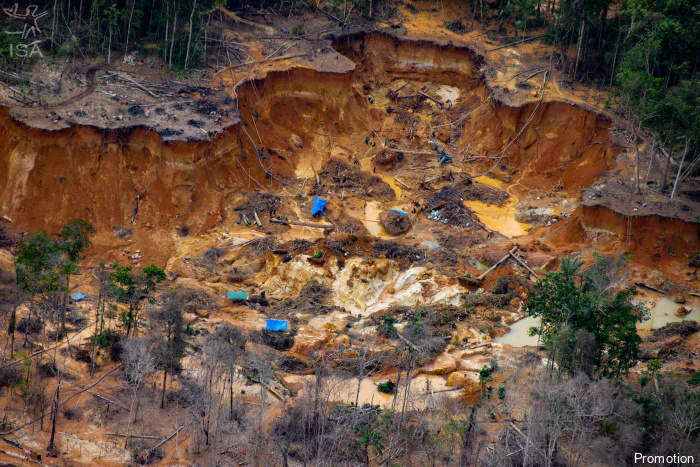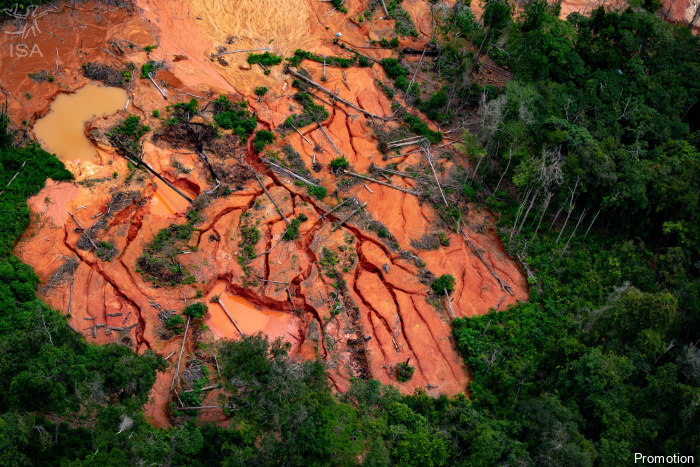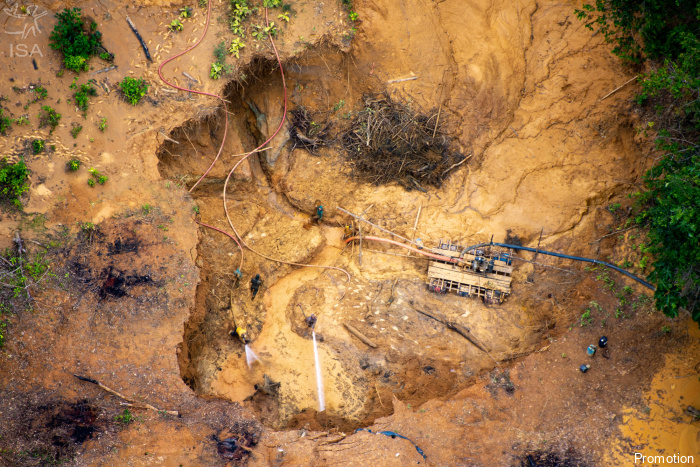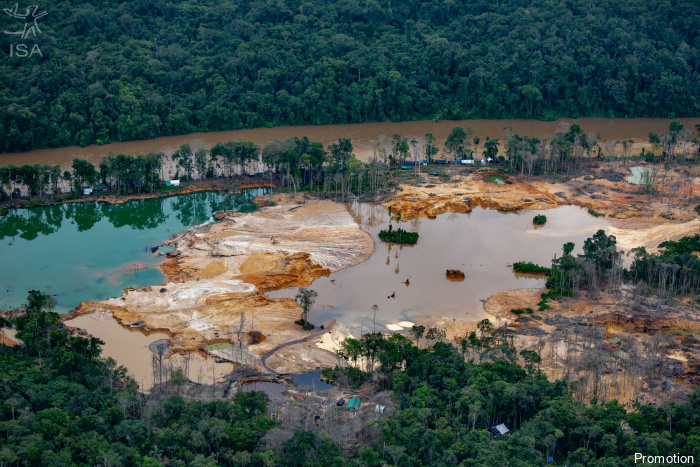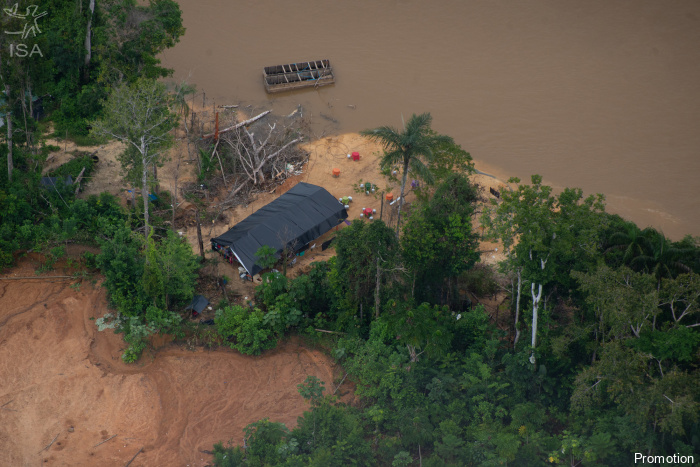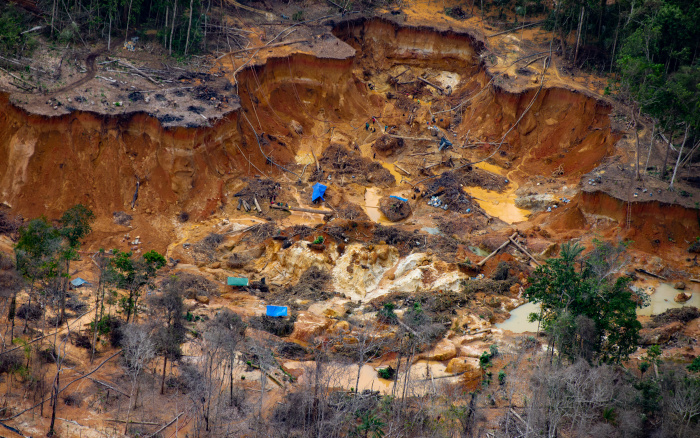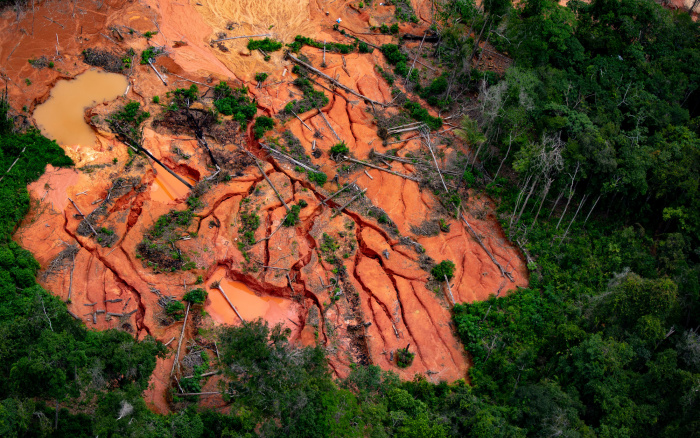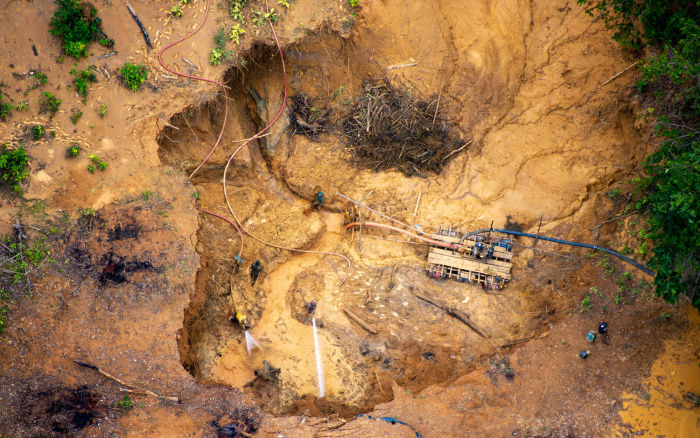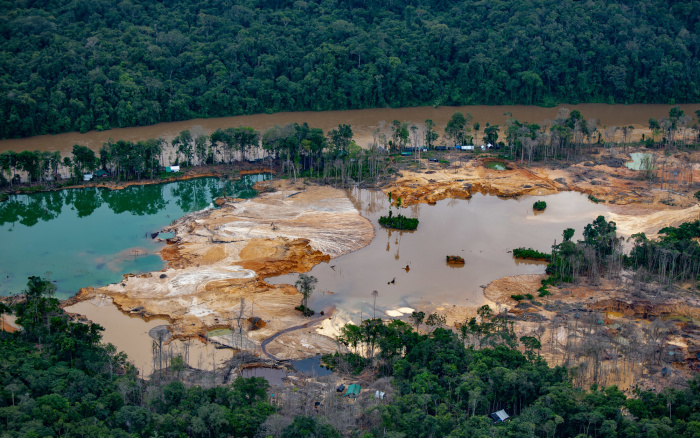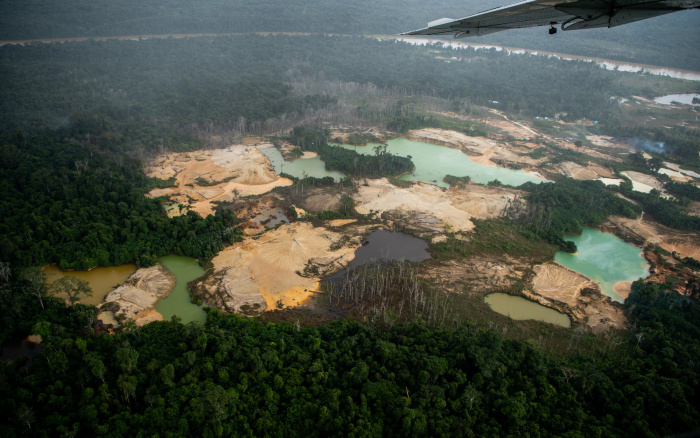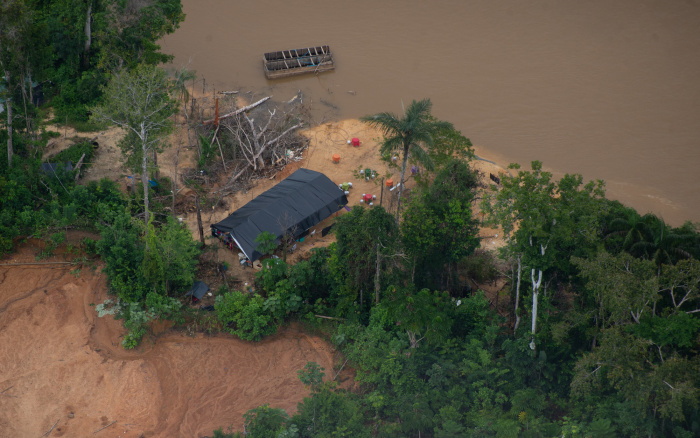Você está na versão anterior do website do ISA
Atenção
Essa é a versão antiga do site do ISA que ficou no ar até março de 2022. As informações institucionais aqui contidas podem estar desatualizadas. Acesse https://www.socioambiental.org para a versão atual.
A Massacre Foretold: Mining and violence explode in the Yanomami Territory
Tuesday, 25 de May de 2021 
Esta notícia está associada ao Programa:
A new report by the Hutukara Yanomami Association shows aerial images of the unchecked expansion of illegal mining in Yanomami territory, with deep craters, camps adjoining Indigenous villages and even restaurants and bars for illegal miners
Flyovers on April 7 and 9 reveal that illegal mining in the Yanomami Indigenous Territory in the states of Roraima and Amazonas is giving way to a new “Serra Pelada”, a massive open-air gold mining operation in the Brazilian Amazon. Just as in the 1980s gold rush, the current economic crisis and the high price of gold is encouraging miners to engage in the activity, which results in deforestation, mercury contamination of rivers, violence against communities, and the spread of COVID-19. Violence against Indigenous communities reached a new high this May.
These recent aerial images of the destruction are an integral part of a new report published by the Hutukara Yanomami Association and submitted to Brazilian authorities. “The images of the Uraricoera River (...) raise a red flag regarding the immense environmental and human tragedy that mining is causing in the Yanomami Territory. It wasn’t for lack of warning, however, that the situation has become so serious,” the report adds.
Recent outbreaks of violence came after Indigenous people blocked miners from using the Uraricoera River to reach one of their camps. In retaliation, miners carried out a series of attacks on Palimiú village, where they exchanged fire with the Yanomami. Three miners died and five people, including one Indigenous person, were injured in a May 10 attack on Palimiú village. After this first attack, two Yanomami children drowned in the resulting panic.
“This is not an unsolvable problem. The State has all the resources to enforce the law and promote the elimination of crimes committed by gold miners against Indigenous people in the Yanomami Territory and the whole of Brazilian society,” the document states. “Past experiences prove that this is possible, through strategic actions”. Among some of the measures suggested in the report are the detonation of airstrips and the blocking of camps and equipment used by the miners, such as ferries, helicopters and ATVs. The document also recommends blocking access to rivers, reopening checkpoints and ensuring permanent presence of the Federal Police. These demands are echoed by the community of Palimiu, following the attacks on their village.
In March 2021, analysis of satellite images indicated a historic total of 2,430 hectares (6,004 acres) destroyed by mining activities in the Yanomami Territory. In 2020, 500 hectares (1,235 acres) of Amazon rainforest in the Yanomami Territory were cut down. Some 200 hectares (almost 500 acres) of forest were destroyed in the first quarter of 2021 alone. At this rate, 2021 is on track to set a new record for deforestation in the territory.
Near the mouth of the Parima River, on the Uraricoera River, there is one of the largest concentrations of illegal miners to date. What makes the new mining pits unique are the depth of the craters and the complexity of the infrastructure that supports the activity, with specialized barracks and sheds. One of them even houses a restaurant, with round tables placed along the river bank.
The concentration of illegal miners in the region near the mouth of the Parima River is relatively recent, the document says, “having expanded and consolidated in recent years.”
According to Hutukara, the images “confirm the vigor of this gold mining center, and reinforce the idea that the emergence of such new areas indicate an expansion of mining areas, rather than replacement,” since there was no decrease in operations at the site known as “Tatuzão do Mutum” along the Uraricoera River, which has been the main mining area. In June 2020, two Yanomami were murdered by miners in the Parima River region.
About 27,000 Yanomami live in the territory, which is roughly the size of Portugal. In recent years, however, it has seen a new invasion of about 20,000 illegal miners, known as garimpeiros. Last year, the influx caused a 30% increase in illegal mining inside the territory, and it has also brought infectious diseases, including COVID-19 according to the report "Scars in the Forest" released by the Hutukara Yanomami Association (HAY) and Wanasseduume Ye'kwana Association (Seduume) in March 2021.
The past five years have seen a nearly 500% increase in malaria cases in the Yanomami Territory, while nearly 14,000 new cases and nine deaths from the disease were reported last year.
On May 19, the Inter-American Commission on Human Rights and the South American Regional Office of the United Nations High Commission expressed their grave concern over the acts of violence that have affected the Yanomami and Munduruku Indigenous peoples in Brazil. They urged the State to fulfill its duty to protect the lives, personal integrity, territories and natural resources of these peoples.
ISA
Imagens:



